Keeping up with hundreds (if not thousands) of new product releases every year is a daunting task for retailers. How can members of the trade know which products to stock, which to drop and which to keep a close eye on? This year’s list of 129 Growth Brands is a good place to start, as these wine and spirit brands have all managed to stand out in a crowded marketplace and gain consumers’ trust.
We’re proud to honor these brands in four categories: Rising Star, Fast Track, Established Growth and Comeback. Their sales increases in 2017 were integral to the overall success and continued growth of the beverage alcohol industry.
We spoke to many of this year’s winners about what made them successful, from activation programs and packaging changes to new introductions and line extensions. These wines and spirits serve as an example for newcomers to follow, and for industry veterans to emulate.
Beverage Dynamics congratulates all 48 spirit and 81 wine winners, who will be honored during a reception at the Wine & Spirits Wholesalers Convention in Las Vegas on April 30. Last week we posted the spirits winners.
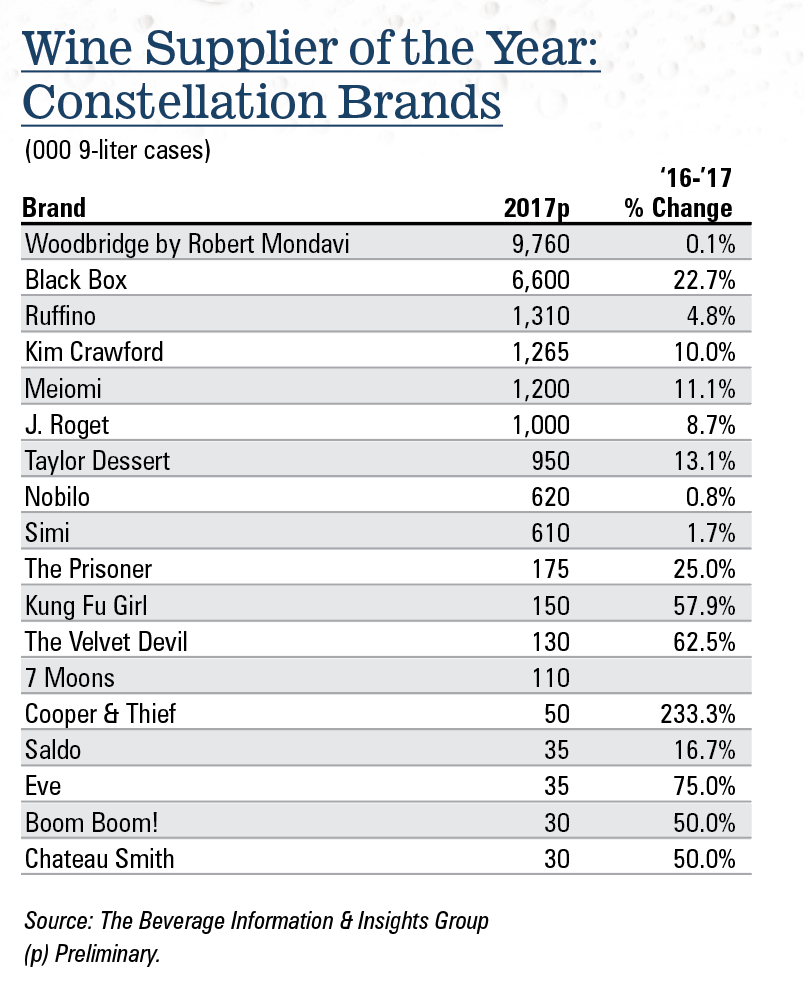 Vino Innovation
Vino Innovation
Wine consumption in America increased again during 2017, growing 1.3% to 345.7 million 9-liter cases. This comes after a total of 341.1 million cases in 2016, which itself represented a 2% volume growth over 2015.
That puts 2017 in line with recent growth trends. The U.S. wine category has had 1% to 3% annual growth rates dating back to 2011, when the country first began to emerge from the Great Recession.
What’s behind this recent growth? Millennials play a large part. They are an explorative group, a generation more interested in trying new flavors than adhering to one style or one brand. Look for younger LDA consumers to continue buying across different categories, countries and varietals of wine.
How do you capture their attention? Labels are as important as ever. Millennials care less about where a wine is from, and more about the eye-catching art, the brand story and the specific varietal inside.
Savvy brands like The Prisoner and 19 Crimes have increased sales with labels that stand out and invite customers to explore the stories behind the brands. This past year, 19 Crimes even used an augmented reality cell phone app to bring to life the historical criminals depicted on its labels.
In terms of wine styles in 2017, sparkling wines remained red hot, driven by rosé. The days of rosé being a woman’s drink, sipped only in warm months, are long gone. Rosé is now a year-round beverage, enjoyed by men and women alike.
This trend has trickled into prosecco, champagne and other bubblers. They have overcome old reputations as wines meant only for holidays and special events. Now, anytime of the year is appropriate to pop open some sparkling wine. No end is in sight for the bubbly boom.
Same for the rise of red blends, especially from California. These have become a go-to purchase for many U.S. consumers. People who may not know their varietals or regions can still feel safe buying a California red blend, since they are familiar with the quality and rich, fruity flavors. It’s hard to go wrong in this category, which is why it remains on the upswing.
Brands have continued to tap into social media to connect with consumers. Instagram and Snapchat campaigns are reliable ways to put brands before the eyes of consumers. Another way for savvy brands to stick out is partnerships with charitable causes. This is a win-win. Brands gain positive publicity for helping a worthwhile cause (and plenty of social-media content) while also driving attention towards a deserving charity.
Brands that connect with consumers this way will be among those who win Growth Brands Awards this year and in those to come.
Established Brands
Many long-successful wine brands enjoyed another year of growth in 2017.
Ménage à Trois, from Trinchero Family Estates, continued its climb up the sales charts, with 2.7% growth over 2016 sales, reaching 2.9 million cases.
“Ménage à Trois has been one of the most influential retail brands in wine since essentially creating the Red Blend category with its launch in 1996,” says Dave Derby, SVP of marketing for Trinchero Family Estates. “This past year marked another successful one for the brand, with the launch of Decadence in 2017, which became the number-one new item in the 26-week period ending Jan. 27, 2018.”
Derby says the brand has remained cognizant of emerging trends within the broader category of red blends. “As the category matures and further diversifies, we’ve seen some sifting within it. Similar to the Chardonnay category, today’s consumers have many choices in the various expressions of red blends – from softer, brighter styles to darker, more intense expressions. We’re seeing increasing consumer interest in softer, more elegant red blends,” he says.
Decoy from Duckhorn Wine Company grew 21.5% in 2017 to reach 587,000 cases. Again, savvy understanding of the current wine market has helped the brand remain focused on growth opportunity.
“The luxury segment has been growing and continues to grow at double digits, and Decoy’s brand growth continues to outpace the industry,” says Belinda Weber, director of digital trade and consumer marketing for Duckhorn. “There are also a number of varietals growing within the luxury segment. We are proud to be a top-five brand in eight varietal categories, including top spot in cabernet sauvignon, merlot and sauvignon blanc.”
Continued line expansion and digital marketing efforts are both in the plans.
“This year, we are integrating Calera and their tremendous Central Coast pinot noir and chardonnay into the portfolio,” Weber says. “On the digital/social side we are launching a Decoy influencer campaign this spring. We will also continue to look at new opportunities within our current brands. Last year we introduced Decoy Rosé and it was an enormous success, so will we look to continue branching out where it makes sense.”
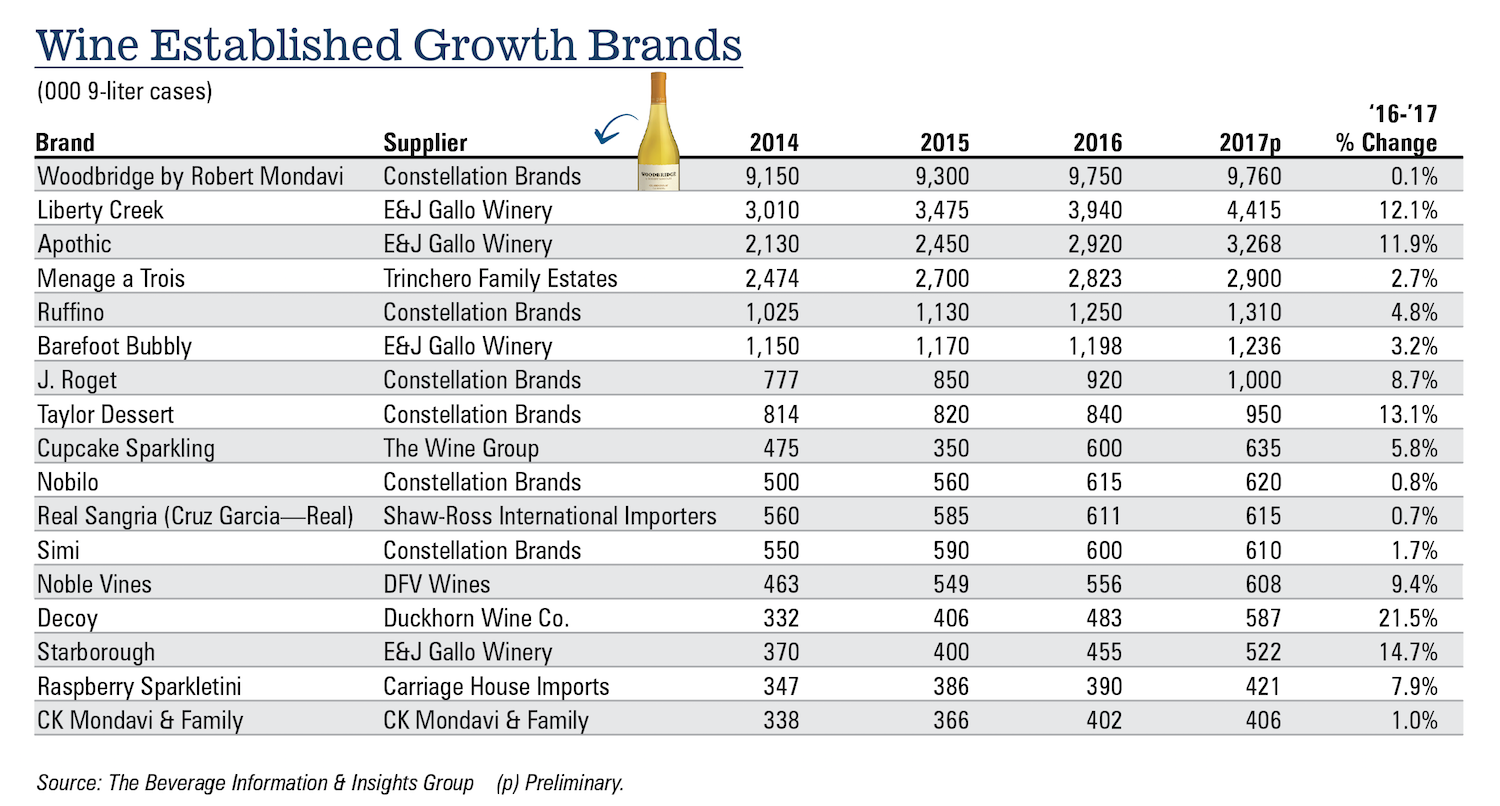
On the Fast Track
Brands that are rapidly on the rise are recognized with Fast Track Awards, including Meiomi from Constellation Brands. The wine line grew 11.1% in 2017, reaching 1.2 million cases. New marketing efforts played a large role.
“In 2017, we launched our first national advertising campaign and continued to invest in consumer sampling through our Meiomi Home Tour of top wine and food festivals around the country,” says Ben Dollard, CMO of wine and spirits for Constellation Brands. “These investments, along with strong field execution, drove the brand’s double-digit growth in 2017.”
Meiomi’s plans for 2018 include the launch of a rosé.
Also earning a Fast Track award for Constellation Brands was Black Box. This alternatively packaged line of wines “offers a breadth of varietals in multiple convenient formats at affordable prices,” explains Jaymie Schoenberg, VP of marketing for Black Box wines.
“Alternative packaging is seeing tremendous growth,” Schoenberg adds. “Wine drinkers recognize the benefits of convenient packaging – especially on-the-go formats – and with greater awareness that quality wine can come in a box, we are seeing consumers become increasingly comfortable with this format.”
Last year Black Box solidified its consistent following with the launch of a loyalty program. Participating fans earn benefits like rewards and entries into sweepstakes. “We are one of the first wine brands to launch a loyalty program of this caliber,” Schoenberg says. “We have some very exciting, high-value rewards in the works for the coming year.”
Mionetto from Mionetto USA has increased from 499,000 cases in 2014 to 680,000 last year. Beyond tapping into the red-hot trend of sparkling wine, the brand reached consumers through multiple effective marketing campaigns in 2017, according to Mionetto USA Director of Marketing, Greg Berumen.
Mionetto’s “Bucket of Bubbles” program distributed 187-ml. bottles of its Prestige Collection, including Prosecco Treviso DOC, rosé and moscato, to encourage on-premise trial. At the retail level, “Style Your Prosecco” encouraged consumers to keep their prosecco cool with frozen juice cubes. This included cube tray VAPs, which also complemented the “Cocktail Challenge” promotion. The “Pink Cork for the Cause” program took place in September and October, in honor of Breast Cancer Awareness, while holiday-branded gift boxes wrapped up the year.
Chateau d’Esclans from Shaw Ross International Importers reached 76,000 cases in 2014, and hit 315,000 last year on the back of 57.7% growth between 2016 and 2017. The brand’s mega-hit Whispering Angel rosé is a big part of this success.
“Whispering Angel is leading the Nielsen ratings for French wine over the $20 price point,” says Paul Chevalier, Shaw-Ross national fine wine director. “From what we are seeing in summer destinations like the Hamptons or Nantucket, rosé is the new champagne. I believe that premium rosé is starting to erode the traditional sparkling wine category – especially with Millennials.”
Marketing wise, Shaw-Ross hosts or co-sponsors “over 400 events a year with Château D’Esclans in the U.S., including the largest rosé festival in the country called Pinknic,” Chevalier says. “It is our vocation to continue to educate Americans about quality rosé from Provence and carry the rosé flag in a sort of ‘town hall’ marketing strategy.”
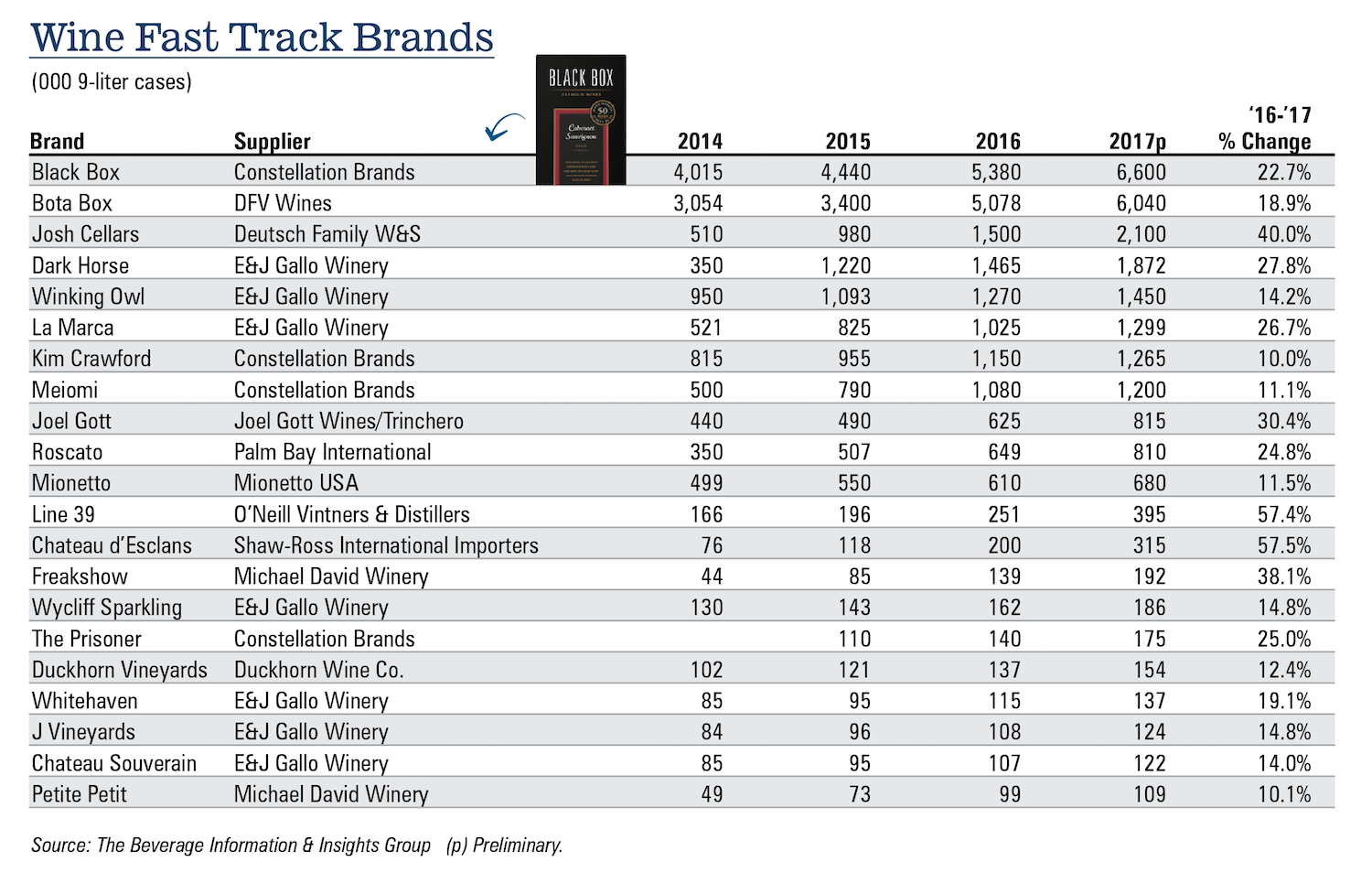
Watch the Rising Stars
Keep a lookout for these newer brands, recently launched and quickly successful.
Strawberry Sparkletini from Carriage House Imports has grown from 5,000 cases in 2014 to 125,000 in 2017. “We’ve had a lot of success with digital couponing apps like Ibotta,” says Michael Aarons, Carriage House Imports director of marketing and brand development. “We’ve had a lot of success acquiring new customers through that offering.”
“In 2018 we’re focusing on expanding our on-premise footprint, our cost-per-ounce, our resealable cork closure and having a variety of flavors,” Aarons adds. “We’re looking to capture a bigger brunch account in college communities, targeting the success of the classic mimosa.”
Chloe from The Wine Group was at 97,000 cases in 2014, and now has totaled 325,000 in 2017. Kimberly Fabbri, The Wine Group Marketing Director, points to the brand’s price-to-quality ratio.
“Chloe’s Pinot Grigio is grown in Northern Italy’s Valdadige DOC, the same sourcing as competitors that sell for twice as much on a list,” she says. “Our new Central Coast rosé continues to win in blind tastings against more expensive rosés from California and Provence.”
In terms of staying ahead of trends, The Wine Group “launched Chloe Rosé into select markets in 2016 and were well-positioned to expand nationally in 2017 as the rosé trend hit full steam,” Fabbri explains.
The Wine Group believes merlot is on the cusp of a comeback and last fall introduced Chloe Merlot. Fabbri also reports success from the brand’s partnership as a sponsor of the 2017 Tribeca Film Festival, which it will repeat in 2018.
Rabble Wine from Rabble Wine Co. has more than doubled in size since 2014, totaling 51,000 cases last year.
“We believe our brand resonates with consumers, particularly Millennials,” says Caine Thompson, president of Rabble Wine. “Our branding features provocative, edgy and engaging artwork. We’re finding this interesting interplay between tradition and innovation is evoking discussion, while drawing attention to the balance between bold and historical.”
Alverdi has grown from 49,000 to 73,000 cases since 2014. “Honest packaging and an honest product with exceptional quality has allowed Alverdi to break through,” says Michael Wolff, VP of Marketing for brand owner Opici Wines – Market St. Spirits. “Further, Alverdi’s sustainably packaged 3-liter box is also driving consumer and trade interest.”
Alverdi will release a new Rosato this spring. “We are launching dedicated trade and consumer-oriented advertising program that will continue to build throughout the year,” Wolff says. “Additional investment includes a dedicated website that will extend our social media program.”
Le Charmel is a newer brand from Winesellers Ltd that has grown from 2,000 cases in 2014 to 34,000 in 2017. “A key factor for the brand is the unique ‘French Classic’ varietals and regions the brand showcases,” says Todd Nelson, Winesellers director of marketing. “Touraine sauvignon blanc from the Loire valley, pinot noir from Pays d’Oc, a syrah-grenache grown in the Rhone Valley and the Côtes de Provence rosé.”
“The growing trends in the market show consumers are interested in valued French wines that come from small growers, unique varietals sourced from sustainable/organic farmed vineyards throughout different regions of France,” Nelson adds.
The brand Sangria Lolea, by Bodega & Company Inc, has increased volume from just 1,000 cases in 2014 to 45,000 last year.
On-premise, the brand has “found a niche at casual, chef-driven restaurants that aspire to provide their guests with a high quality, authentic product, yet need to have streamlined and efficient offerings,” explains Laura D’Ocon, communications manager.
Innovation, sampling and eye-catching branding have also driven sales off-premise.
“We invested even more heavily in sampling and demo opportunities in 2017 and it paid off with many of our retail partners telling us that Lolea demos are some of the most successful that they have ever done,” D’Ocon explains. “Our latest innovation, Lolea N5, a wine cocktail made from a tempranillo-grancha blend with a touch of hibiscus flower and ginger, capitalizes on the rosé boom.”
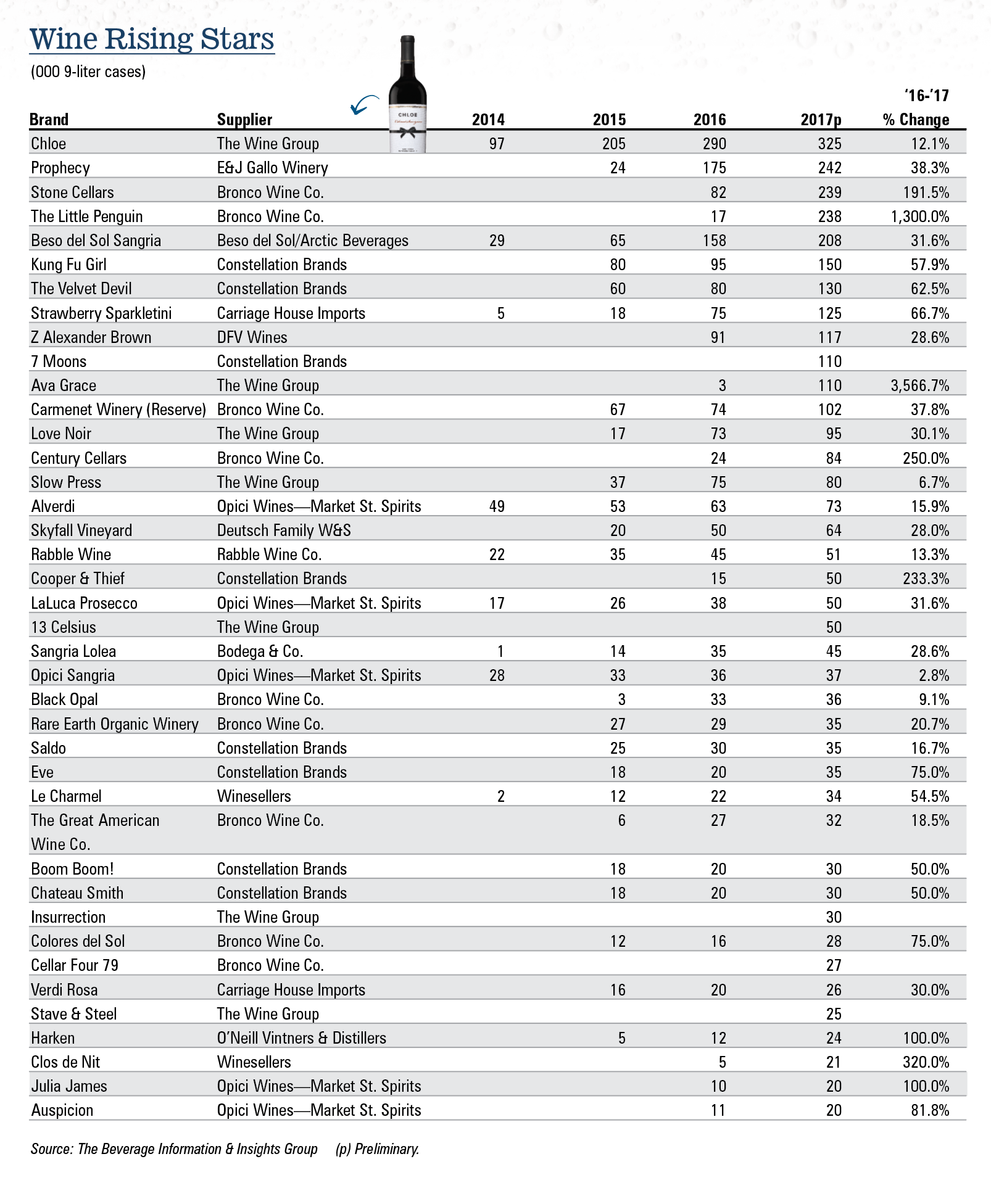
On the Comeback Trail
Comeback Brands this year include Black Stallion and Gnarly head, two California brands from Delicato Family Vineyards.
Black Stallion had dipped to 42,000 cases annually in 2015 before recovering and reaching 68,000 in 2017. “The Black Stallion name is well-liked by consumers and the new label communicates the winery’s unique sense of place,” says Kate McManus, Delicato Family Vineyards VP of marketing.
She also points to Black Stallion’s “distinguished track record, with six consecutive 90+ point scores on our cabernet sauvignon” as another driver for the brand’s turnaround.

Gnarly Head had been on a multi-year trend of shrinking, which ended in 2016 with 687,000 cases. In 2017, the brand reversed the trend and reached 716,000 cases. Again, help came from label updates and high ratings. “The new package is getting lots of support from consumers and retailers,” McManus says. “Gnarly Head’s wine quality continues to impress with three 90-point rated wines in 2017.
Kyle Swartz is managing editor of Beverage Dynamics magazine. Reach him at kswartz@epgmediallc.com or on Twitter @kswartzz. Read his recent piece Bordeaux’s Dry White Wines Hold Strong in America.

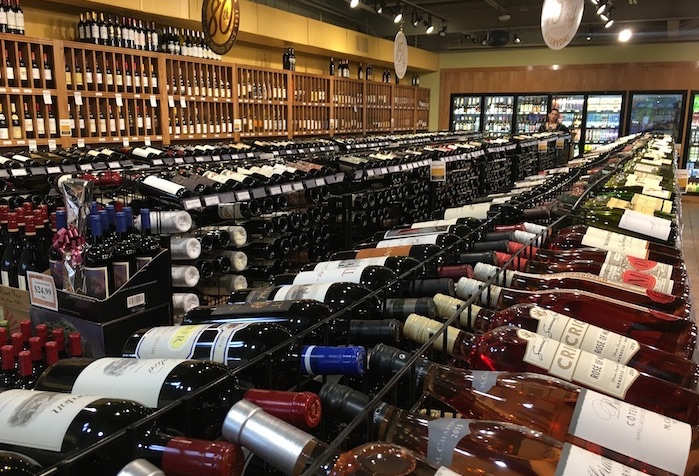





[…] Beverage Dynamics released their report this month of The Fastest Growing Wine Brands and Top Trends of 2017. […]